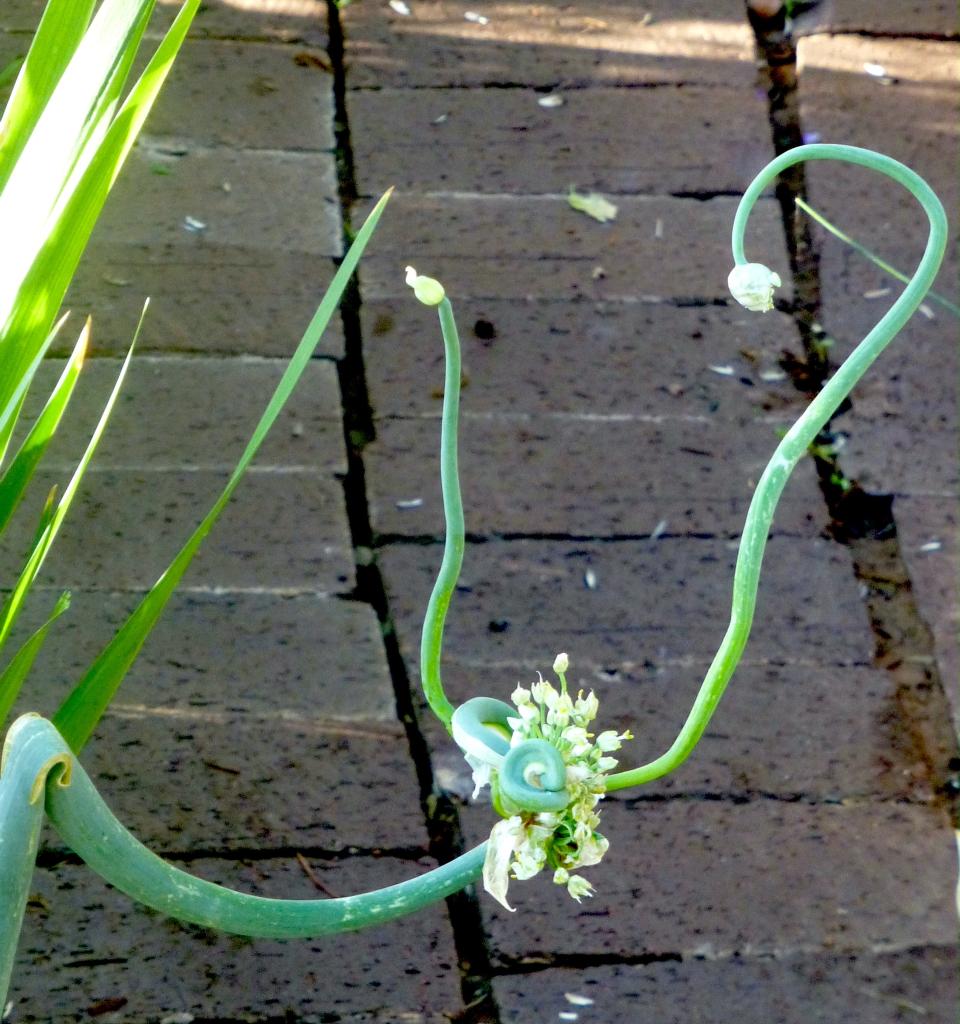Gardening for You: Whimsical walking alliums
Gardeners can be really serious about their plants still, adding a little whimsy to the garden is good for the soul. A short stroll into a garden where quirky walking onions are growing brings a smile every time.
Today’s column has a few more scientific terms than usual, but there is no way around it.

Walking onions, also known as Egyptian onions, Tree onions, or Topset onions, are perfect for gardeners that have a sense of humor. The confusion caused when one plant is known by many common names can be circumvented by referring to a plant by its scientific name. The scientific name of the walking onion with its assorted other common names is Allium x proliferum.
The scientific name Allium x proliferum reflects that it is a hybrid member of the onion genus Allium; the proliferum is for its proliferous inflorescences (blooms) that have mixtures of florets and bulbils. Bulbils are miniature, fully formed bulblets that are often called topsets, hence the common name topset onion.
The unique characteristic of Allium x proliferum is its flowering habit of bearing prolific inflorescences that are composed of a mixture of reproductive organs, the florets, and vegetative growth, the bulbils. This biological phenomenon of a bloom bearing florets and bulbils is known as vivipary.
The term vivipary (viv-ih-PARE-ee) originates from the Latin meaning live birth. Viviparous plants have the capacity to develop vegetative growth among reproductive organs. In the walking onion, vivipary is the genetic capability of a floret changing from a floret into a tiny bulb. The transition is an amazing wonder to track – one day it is a floret and the next, it is turning into a bulbil.

The floret-forming bulbils of a walking onion can sprout into secondary shoots or “legs” on top of the flower stalk. The weight of the newly sprouted legs cause the flower stalk to flop over; bulbils reaching the soil can root and propagate an entire new generation. The common name walking onion comes from the way it “walks” across the garden with secondary shoots. They seem to sprout new legs overnight.
Walking onions spark whimsy in an ornamental garden and are effortless to grow. Plant bulbs or bulbils in early autumn. Flower stalks emerge in the spring and the inflorescences put on their viviparous show. They make quite a statement in the garden.
Q&A
Q. Lubbock A-J reader Penny C. of Lubbock asked about pruning her freeze-damaged crepe myrtles.
A. Cut back dead, bare branches to their origin. Allow the flush, young shoots to continue to grow for now but in the summer remove the weakest shoots; retaining about 10 of the most robust shoots. Allow these to grow over the summer and winter. Next summer thin to the strongest three or five shoots. The saved shoots form the framework for the reconstructed crepe myrtle.
Ellen Peffley taught horticulture at the college level for 28 years, 25 of those at Texas Tech, during which time she developed two onion varieties. She is now the sole proprietor of From the Garden, a market garden farmette. You can email her at gardens@suddenlink.net
This article originally appeared on Lubbock Avalanche-Journal: Gardening for You: Whimsical walking alliums

